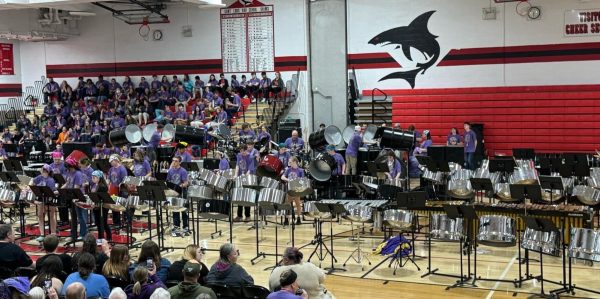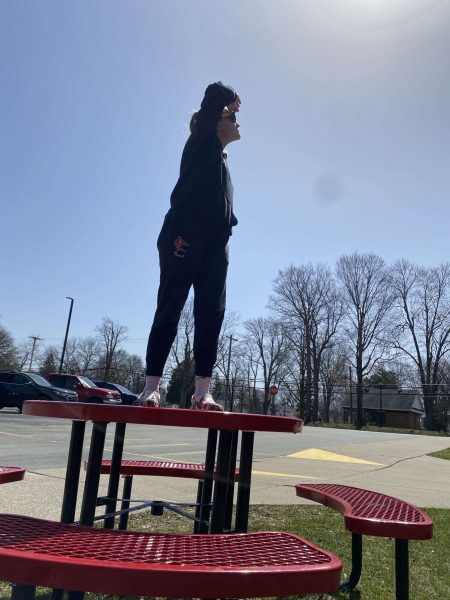Massive outbreak: the impact of COVID-19
April 10, 2020
The earliest known case of COVID-19 was Dec. 31, 2019, in Wuhan, China. It has since spread all over the world and caused an abundance of major shutdowns. In late February and early March of 2020, many universities closed and sent students back home. These were some of the first shutdowns in the United States.
The first presumptive-positive cases in Michigan were found March 10, 2020, and Governor Gretchen Whitmer issued a state of emergency in Michigan that would take effect March 24. Just a few days later, President Trump declared COVID-19 a national emergency March 13. After Trump’s announcement, Whitmer banned gatherings of more than 250 in the state of Michigan. As a result, St. Louis Public Schools announced a three-week shutdown later that day. Students were sent home with little idea of what was to come in the following weeks, and there were mixed reactions.
Junior Macie Salladay stated, “My first reaction was excitement because it was the part of the year where everything is chaos and stressful. I saw it as a time to relax and refocus and get ready for exams and the SAT. I was excited for a chance to chill out for a while and hang out with my friends and family.”
Whitmer then banned gatherings of over 50 people March 17. Any plans to travel or meet up with friends were quickly abandoned as Whitmer also signed the “Stay Home, Stay Safe” executive order March 23. This order declared all non-essential businesses would close, and all Michigan residents must stay home or stay six feet away from one another.
Some students have taken the opportunity to help during the crisis. Sophomore Craig Bebow is using his skill of welding to create medical shelves for hospitals. He said, “[The order has] affected me in a positive way. It has given me the opportunity to become a necessary worker and help make a change for the COVID-19.”
Students were unsure of what was to come for the remainder of the school year until Whitmer declared all K-12 schools across the state were to close for the rest of the year unless previous gathering restrictions are lifted.
Freshman Adrianna Horton shared, “I was sad and upset about it if I’m being honest. I was looking forward to finishing off the year, seeing Mr. Huff wrestle Gavin, and seeing my friends.”
All seniors will be given the chance to still graduate and move on to college next fall. Also, standardized tests, such as the SAT, have been canceled and will be held later on in the year for current juniors.
Additionally, the MHSAA officially canceled the remainder of winter and spring sports April 2. Senior Track athlete Alex Lawhorne shared, “I was really looking forward to one last season with my teammates, and I had big goals for the end of the season that I had been working toward all year. I was disappointed to say the least.”
With cases still rising in Michigan, Whitmer signed an extension of the “Stay Home, Stay Safe” order Thursday, April 9, and it is to be in place until April 30.
The virus has been confirmed in almost every county in Michigan, and there have been just over 21,000 cases confirmed across the state and 1,076 deaths as of April 10. Wayne County, Oakland County, and Macomb County contain around 80% of all cases in Michigan, which now is the third-highest state regarding confirmed cases. Gratiot County currently has six confirmed cases with zero deaths.
The “Stay Home, Stay Safe” order is crucial to the decline of the virus in Michigan. All the shutdowns and closings are entirely necessary, so staying at home is the best option for everybody.










